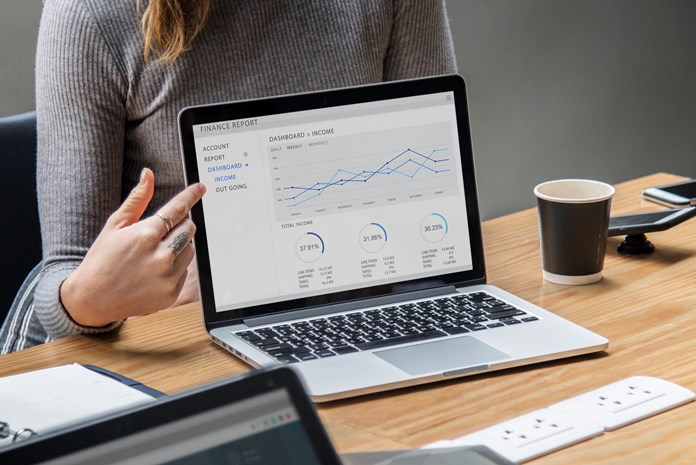Posted on 03 June by Simon Gomez in Dynamic pricing
Most of us probably know Uber, heard of it, and even used the app before. If you don’t know what Uber is, it is a transportation company where you set your desired location (point A) on your smartphone. A driver comes in a car, picks you up, and takes you to the final destination (point B). Sometimes you might encounter that the prices go up when it is raining, or when most people finish their work shift in the afternoon or on a busy night. And it goes the other way around: when there is a low demand for the service, prices go down. This method is called dynamic pricing.
Dynamic pricing is a strategy that allows a company to modify its prices according to various aspects, such as competitor’s prices, market demands, and other factors. While Uber is relatively a ‘new company’ (founded in 2009), believe it or not, companies had been using this strategy before, and people already faced the dynamic pricing strategy in the past. Two examples are airlines and hotels. These sectors have been using this technique for many years.
In 1980, airlines were the first industry to modify prices throughout the day. At that time, one person was in charge to manually change the prices, depending on different factors such as time of the day, seats left on the plane, and flight length. Years later, airlines decided to invest large amounts of money on price software and had large teams analyzing the data, and they were in charge of setting price rules. As time passed and technology advanced, this process became more automated, and more companies are using it.
There are still some organizations, and media, that label dynamic pricing as a negative thing. That, with no justification at all, because more companies are using it. While they have this misconception, companies like Uber, Amazon, and Alibaba are leading competitors in their sector by using dynamic pricing. In the following lines, we are going to debunk the most common myths about dynamic pricing.
MYTH #1: Dynamic pricing is a black box
There is the common thought that dynamic pricing works as a black box. That is false because humans have their input in the software. They are the ones that create the pricing rules and modify the prices if they want to on their products. It is vital and essential that you or someone else in your company understand what the program is doing.
Another point that destroys any argument that dynamic pricing is a black box is the following: Any dynamic pricing software has to include in their system a tool that explains step by step everything and how the program arrived at that recommendation or solution. For any dynamic pricing software, it is practically unacceptable not to include this feature.
MYTH #2: Dynamic pricing is the same as price discrimination
The majority of people think dynamic pricing is the same as price discrimination, and that is a huge mistake because they are two different concepts. Price discrimination is when you sell the same product at different prices. In other words, you offer the same good to different people at different prices depending on various aspects such as age, location, quantity demanded, and consumer attributes.
Dynamic pricing does change the prices on products, but not for individual users, for everyone. Besides, in dynamic pricing, the fluctuations in prices occur due to market variations in demand and not in demographics like price discrimination.
MYTH #3: Dynamic pricing scares buyers
Dynamic pricing critics state that customers are scared to buy from web pages or retailers that use this strategy. That happens because price changes occur frequently, they will go to the competition. After all, they don’t like the constant changes. Once again, they are wrong.
The price of a product or service will never be too low or too expensive. That is due to many pricing rules and agreements. This way, the retailer knows which price margins they can operate without affecting your brand, and your customers will not be shocked about price changes. Plus, customers are notified and comprehend the average prices of your products.
MYTH #4: Customers haven’t bought in sites that use dynamic pricing
This statement doesn’t make any sense at all. As we said before, airlines began using dynamic pricing in the 1980s! Now, dynamic pricing is present in many industries, such as hotels, car rentals, railroads, and sports events. Furthermore, giant eCommerce sites like Amazon and Alibaba utilize dynamic pricing on their products.
Believe it or not, people are used to buying this way. If you purchase an airline ticket days in advance, it will be cheaper. If you acquire it near your planned day or the same day you are flying, it will be expensive. The same goes for booking a hotel. They are aware that many times it is likely they paid a different price than someone else (for example, amusement parks).
Here communication plays a significant role. People will adjust faster and will not have a problem with this if you notify your customers that prices are changing daily and that the best offer comes when they buy in advance.
MYTH #5: It’s all about raising prices and getting more money out of consumers
Many people think that dynamic pricing is just about increasing prices and squeezing the consumers to get more money. That is wrong because what dynamic pricing does is align the prices according to the market demands.
But what these people ignore and don’t tell you is that there are days that the prices of some products or services are lower than usual. Dynamic pricing adjusts the prices so that those who can afford to pay more pay the higher price. Those people who cannot afford the product pay less.
As we have seen, all of these myths are nothing but false statements that are not letting your company grow. Dynamic pricing is a great tool that benefits your business and consumers when the implementation is correct with the right strategy.
PriceTweakers offers you the possibility to create many dynamic pricing strategies with recommendations explained step by step so you can understand what the system is doing. Also, you can set a minimum margin per product or brand so that you can never sell below your purchase price or desired margin. This way, customers will not be scared by the price changes you make. Follow us for more information.
Share this page





